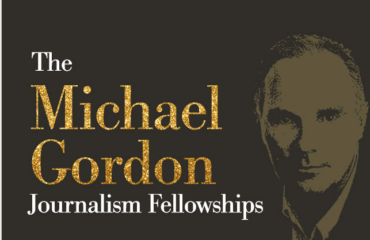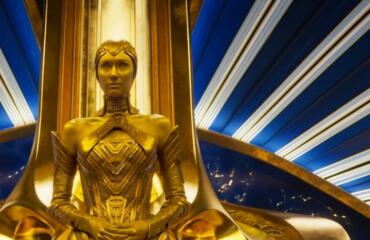Boredom has become one of the most underrated sensations of our time. It’s no coincidence that the cultural conditions conspiring to keep us occupied – by forcing us to work longer hours, by auto-playing one more episode, by notifying us when somebody angrily replies to our tweets – are the same conditions out of which Donald Trump has arisen.
If the rising tide of people using mobile phones in cinemas is any indication, fewer people every day can deal with being bored. But out of boredom can flow so many other feelings.
A few years ago I watched James Benning’s Stemple Pass. The two-hour-long film contained only four stationary shots of a hut, one for each season. Each shot lasted half an hour, beginning with a voice-over: Benning reading from the Unabomber Ted Kaszinsky’s diary. He would read for a while, and then there’d be nothing but the sounds of nature for 20 minutes until the season changed.
The films in this list were not constantly gripping from whoa-to-go. Some of them bored me in parts. But they were also responsible for spine-tinglingly good sequences.
I fell asleep halfway through Stemple Pass. But then I was awoken by the noise of a helicopter. I felt immensely irritated that my nap had been abruptly interrupted by the excruciatingly loud noise of this machine on the soundtrack.
I felt frustrated at this intrusion of technology into my personal tranquility. I felt, in other words, exactly like the Unabomber.
By boring me to sleep, Benning made me empathise with a terrorist. Coming to this realisation was one of my most confronting encounters with art.
If we don’t reclaim boredom, if we don’t say that it’s okay for a movie to slow down for a while, then we end up with a syndrome I mentioned earlier this year in relation to Batman v Superman. Movies that ceaselessly move their narrative forward while never allowing anything to seep in.
Momentum for momentum’s sake.
The films in this list were not constantly gripping from whoa-to-go. Some of them bored me in parts. But they were also responsible for spine-tinglingly good sequences. Boredom preceded two of my favourite moments at the movies this year: a Leonard Cohen-scored dance sequence in The Wait and a sad then hilarious birthday brunch in Toni Erdmann.
Both sequences erupted out of their relatively mundane narrative surroundings. If these films operated entirely at the level that they were operating at for these standout sequences, the results would be exhausting. Give me the highs and lows, ebbs and flows over constant momentum any day.
We’re more willing to experience boredom in a cinema than when watching things at home. It takes a lot of effort to walk out of a cinema, so you’re forced to endure it in the hope that it will be followed by more heightened sensations. At home, nobody shames you for taking out your mobile phone.
It’s an understandable desire. In the end, many movies don’t deserve our boredom. But that’s the price you have to pay for the movies that do. It’s worth it.
Top 10 Films of 2016
PLUS! Five Favourite TV shows
1. I, Daniel Blake
“If you want to see how Trump/Brexit/the global rise of ethno-nationalism happened, watch X” has become something of a cliché inside cultural criticism circles. It’s a mantra, something to recite as we somewhat desperately try to convince ourselves that criticism matters, that we can see things other people cannot.
It’s a banal truism, really. Popular culture inevitably reflects the context that creates it. But certain filmmakers are more highly attuned to the current socio-economic climate than others.
Which brings me to veteran Leftist filmmaker Ken Loach and his most recent film I, Daniel Blake, winner of the Palme d’Or at the 2016 Cannes film festival. It speaks its truths so forcefully that it momentarily damns every other film ignoring the current socio-political climate.
Anchored by a strong, unpretentious performance from comedian Dave Johns, I, Daniel Blake follows one man’s increasingly fraught dealings with the British welfare system. Daniel Blake is a joiner from Newcastle, England, who has had a heart attack and is forced to move onto government benefits. A “healthcare professional” somewhere in the system deems him fit for work, forcing him to actively apply for jobs in order to receive benefits.
Loach begins his film with a black screen, and we hear a phone conversation between Daniel and somebody in the system that’s instantly familiar to anyone who has dealt with a government agency. It’s absurd, and I, Daniel Blake begins as a kind of bureaucratic comedy of manners. But very quickly Loach ratchets up the drama, and I, Daniel Blake winds up becoming an utterly devastating indictment of the pallid state of what remains of Britain’s welfare system.
This would be an unbearably bleak film were it not for the small moments of generosity littered throughout. Most of these people are doing the best they can in a system trying its best to prevent them from behaving outside of its design.
Loach is not a subtle filmmaker, a tendency that works entirely in I, Daniel Blake’s favour. Towards the end of the film, a fed up Daniel scrawls graffiti on the side of his local Jobcentre Plus. (This is the British equivalent of a Centrelink office, and over the course of the film we come to know every intricate detail of the building – the waiting area, the water cooler, the offices, the hot desks, the employees. It’s a fascinating case study in the architecture of bureaucracy.) He scrawls “I Daniel Blake demand my appeal date before I starve and change the shite music on the phones!” A crowd gathers and applauds his gesture, before the police arrive to bundle him off.
It’s a defiant image, a statement about not just this character but Loach’s entire filmography. It might surprise some to learn that the working classes haven’t yet entirely disappeared. When was the last time you saw them on screen?
2. A Bigger Splash
From one class extreme to the other. Luca Guadagnino’s A Bigger Splash is a complex elegy to the European rich and fabulous. It positively overflows with glamour, both on camera and off: from the sunglasses adorned by Tilda Swinton to the way Guadagnino’s camera crash zooms across a room.
The film follows fictional rock Goddess Marianne Lane (played by Swinton, in a performance partly modeled on David Bowie) as she summers on the Italian island of Pantelleria with boyfriend Paul (a brooding Matthias Schoenarts, the sexiest thing in a very sexy film).
In the tradition of many Italian filmmakers before him – Michelangelo Antonioni, in particular, comes to mind – Guadagnino is not interested in just uncritically embracing the excess he depicts. This is most obviously seen in the character of Harry (Ralph Fiennes), a hard partying, boundary-less free spirit and borderline drug addict who shows up out of the blue with his bratty daughter (played by Dakota Johnson, who is much better here than she was in Fifty Shades of Grey.)
Harry is responsible for my favourite line in a film this year. As the group makes their way to a gorgeous cliff-side restaurant, he stops to urinate by the side of the road.
“What are you doing, that’s somebody’s grave,” shouts Paul.
“All of Europe’s a grave,” Harry shouts back.
So, too, is the water surrounding this glamorous island. The 2015 European refugee crisis shadows a lot of this film. It appears in little snippets of radio bulletins, or is briefly mentioned on a TV set in a kitchen. It’s not until the final act that it bursts from the background and into the film’s narrative.
Without giving anything away, A Bigger Splash becomes something of a scathing indictment of these Bowie-like liberals. They might be open-minded free spirits but Guadagnino points out that they’re deeply hypocritical ones. And by provoking his audience into coveting the glamorous lifestyle depicted onscreen, he suggests that we are too.
3. The Childhood of a Leader
For sheer blunt impact you really can’t go past The Childhood of a Leader, a film whose striking score and breakaway finale knocked me out.
Loosely based on a Jean-Paul Sartre short story, twentysomething director Brady Corbet’s debut feature film is mostly set in one house, following the childhood of a tantrum-prone kid who grows up to be a Fascist leader.
For the film’s finale, Corbet stylistically departs from the bulk of the film for a terrifying epilogue set at a political rally decades after the movie’s previous events.
Most disturbingly, given the current political climate, The Childhood of a Leader ascribes a sense of inevitability to the events it depicts. Resistance is futile: this particular collision of history, politics and one man’s damaged psychology is unstoppable.
4. L’Attesa (The Wait)
Piero Mesina’s L’Attesa (The Wait) is jam packed with minor curiosities, all overlapping to form an enigmatic whole. Loosely based on two Pirandello plays and positively overflowing with religious imagery, the film has a simple, even elegant premise. Arthouse doyenne Juliette Binoche stars as Anna, a French woman whose son dies just before the film begins. When her son’s girlfriend Jeanne (Lou de Laáge) shows up at her house looking for him, Anne doesn’t tell her that he is dead.
What follows is a stunningly shot melodrama that seems unconcerned with answering any of the questions that it gently raises about love, loss and life.
Curiously, Mesina seems to set his film in the near past. Characters use chunky phones, and there’s a colourful 90s era iMac in the dead son’s bedroom. Other intriguing elements include the film’s incongruous opening credits, set to music by The XX, and a stunning set piece where Anne dances to Leonard Cohen’s ‘Waiting for the Miracle’ with two young men from the neighbourhood, while Jeanne watches from the side.
Sometimes you can’t precisely say why a film works, or even if it entirely does. But when the subject matter circles the great unknowable – death – that’s not necessarily a bad thing.
5. Embrace of the Serpent
This stunningly crafted, moving exploration of the impact of colonialism is best described as a road movie that substitutes a road for the Amazon River. Shooting in black and white, Colombian filmmaker Ciro Guerra structures his film around two stories. Each follows the Amazonian protagonist Karamakate as he travels with two Western scientists along the same stretch of river, 30 years apart.
Guerra’s clever decision to juxtapose both stories allows us to see the devastating impact the early 20th century had on this part of the world. Particularly resonant is his depiction of the inhabitants of a Spanish Catholic mission, who go completely mad.
This is a lengthy but beguiling film, the kind that seeps into you and stays there.
6. Tunnel
There’s a really cool tiny moment in Korean blockbuster Tunnel that explains how great it is.
The plot needs Bae Doona’s character to learn that her husband has been buried under a tunnel collapse. This is the event that kick starts the movie. The way Tunnel does this is by having her stand clutching a shopping trolley on a travelator. A news anchor on a TV attached to the ceiling breaks the news. She lets go of her trolley, and walks backwards really quickly in order to stay in the same spot on the travelator, so that she can look at the TV above her and watch the announcement that her husband is trapped.
There are a near infinite number of ways in which the script could have had her learn that her husband has been buried inside a tunnel. And they chose this! Tunnel is the opposite of lazy blockbuster filmmaking. For spectacle filmmaking done well, forget Hollywood and turn to South Korea.
(Adapted from my review originally posted to Letterboxd.)
7. Helmut Berger, Actor
Don’t watch this movie sober. Andreas Horvuth’s documentary demands you approach it on its level: as a trash portrait of a washed up star of late 20th century European cinema. Berger spends his days in a tiny apartment, arguing with his housekeeper and with the filmmaker, who captures everything with a fantastically in-your-face handheld camera.
At one point, Berger heads to Monte Carlo for a New Year’s Eve party. Watching the pensioner-aged remnants of the European jet set attempting to live it up provided one of the saddest scenes I’ve witnessed this year. And don’t get me started on the film’s truly shocking final scene.
Ultimately, though, it’s difficult not to respect the tragi-comic figure of Mr Berger as depicted here. Amid many half-lucid rantings to camera, he almost spitefully mentions Bernardo Bertolucci’s treatment of Maria Schneider. Recent revelations of Bertolucci’s abuse of Schneider on the set of Last Tango in Paris seem to vindicate Berger’s attitude. If I were to spend decades of my life surrounded by wealthy manipulators harbouring delusions of artistic grandeur, I, too, would flee to a cramped apartment at the base of a mountain.
8. Elle
What distinguishes director Paul Verhoeven from fellow arthouse provocateur Nicolas Winding Refn (whose 2016 film The Neon Demon you can safely skip) is that Verhoeven knows where his limitations lie. He is smart enough to cede control of his film to those smarter than he is, which is where Isabelle Huppert comes in.
Huppert’s performance as a woman who responds in unexpected ways to being sexually assaulted is integral to making Elle work. As I wrote at the time of the film’s screening at the Melbourne International Film Festival, her performance does not merely save the film, it transforms it into a truly great movie. Not once do you get the sense that she is not in control of her actions, which are almost always not what we’ve been taught to expect from a rape victim.
Huppert has had a stellar couple of years and she shows absolutely no interest in slowing down. She’s currently slated to appear in six films next year.
9. The Fits
Anna Rose Helmer’s debut feature, The Fits, is mostly set in a yellow-bricked community centre, the kind that’s built and then promptly forgotten by its benefactors. Amid the peeling paint and concrete hallways, a troupe of dancers trains every day. Eleven year-old Toni joins the team and before long a mysterious illness befalls them. One by one, the girls have seizures, temporarily losing control of their bodies.
At the most obvious level, the seizures are a metaphor for puberty. The girls brag to each other about having them, and compare their experiences. Adults are nearly entirely absent, and when they appear it’s often out of focus, muttering half-heard things in the background. But there’s a supernatural element, too, most evident in the film’s bravura finale.
Lead actress Royalty Hightower appears in almost every scene, leading us gently into The Fits’ confounding world. And at just over an hour long, its pacing never overstays its welcome. More films could follow its lead.
10. Toni Erdmann
The dramedy is a genre that rarely lives up to its name. As Saturday Night Live’s recent Transparent parody correctly observed, what we call dramedies are more often than not just straight up dramas, or even tragedies, with a couple of jokes thrown in.
How refreshing then to be treated to Toni Erdmann. Maren Ade’s crowd-pleaser both movingly and hilariously deconstructs the relationship between a father and daughter. Ines lives an expat’s life in corporate Bucharest, and one day her practical joking dad shows up on her doorstep trying to reconnect. Things don’t go so well, and he leaves. But a week later he returns to her workplace wearing a wig and false teeth, pretending to be “Toni Erdmann”, a business coach. His daughter immediately sees through his disguise, but she’s too socially awkward to say anything.
What follows is hilarious and heartfelt. The highlight of Toni Herdmann comes in its birthday brunch set piece, a masterpiece of comedic escalation. The packed audience I saw it with was howling with laughter – it’s nice to be reminded of the full force of cinema.
Five favourite TV series
1. The Girlfriend Experience – Series 1
This is not pleasant viewing but in ambition and execution it is by far and away my highlight of 2016 TV. Nothing else really comes close.
Loosely spun out of Steven Soderbergh’s film of the same name, The Girlfriend Experience is less TV series than sustained work of video art. It follows twentysomething law student and high-class escort Christine Reade. In the rarefied world of Chicago restaurants, motel rooms and skyscrapers depicted, nobody quite acts like a human being and everything revolves around money.
Binge it in a couple of goes and overdose on an acidic glimpse of life in the late capitalist city. If you don’t need a cold shower after each episode, you’re probably a corporate sociopath.
2. Les Revenants – Series 2
Early this year, SBS Viceland, then just plain old SBS 2, played host to the second series of Les Revenants, a deeply atmospheric French TV series set in a small town in the mountains where dead people are returning. This season’s temporality had something of a weirdly mismatched quality, due to it being filmed years after the first series but set only six months later.
The structure of Les Revenants is almost hilariously simple: characters brood, have very French discussions about faith and politics etc, and stare at each other in about five different locations. The same eight bars of distinctive music repeat themselves endlessly underneath key moments.
The story doesn’t quite add up, but in a rare feat for TV Les Revenants successfully prioritises atmosphere and mood above narrative. This was perfect midwinter viewing.
3. Please Like Me – Series 4
Josh Thomas’ TV program took a couple of seasons to grow on me, but I’m so glad it did. Funny, awkward and above all sincere, it’s as vital an exploration of twentysomething life as anything else I’ve seen. We could all do with a bit more sincerity from our popular culture.
4. The Real Housewives of Auckland – Series 1
Henry Kissinger once observed that internal politics in universities is so vicious because the stakes involved are so low. The same rule could be applied to the Real Housewives franchise, and the housewives of Auckland engaged in some very vicious politicking indeed. In a year they produced feel good breakout Hunt for the Wilderpeople, New Zealand also gifted the world . . . this. The drama was so intense that it all seems a bit embarrassing in retrospect.
Fittingly, the reunion episode, a staple of every other iteration of the Real Housewives franchise, never materialised. Apparently the channel ran out of money.
5. The Katering Show – Series 2
The Katering Show upped the ante considerably in Season 2. What started as a funny, if somewhat inconsequential, parody of Australian TV’s obsession with food, morphed into a painfully honest comedic portrait of thirtysomething life. The wedding episode is a particular highlight.



